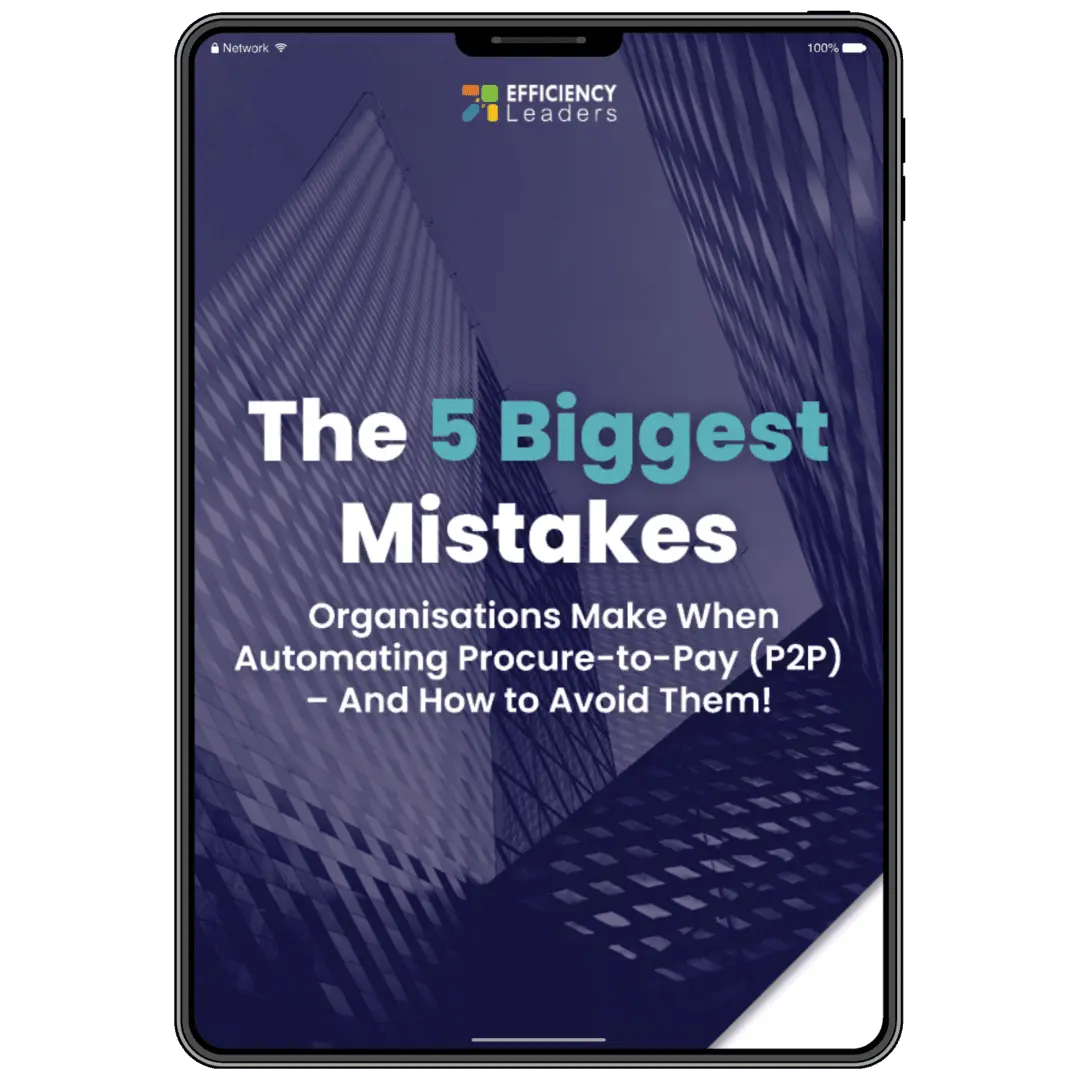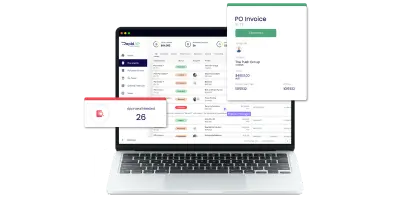What’s PEPPOL?
Background
Pan European Public Procurement Online, or PEPPOL, is an international e-Invoicing and e-procurement standard and communications network that came out of Europe in 2008 and is now used in over 30 countries worldwide.
While various e-Invoicing standards have been used in Latin America since the early 2000s to combat tax evasion, in Europe the PEPPOL standard was introduced to facilitate cross-border trade with public sector organisations.
By allowing companies to trade freely across the European Union, PEPPOL provides more markets for companies to sell into, helping to drive economic growth, increase competition, and deliver better value for money.
In February 2019, Australia and New Zealand adopted the PEPPOL e-Invoicing framework to help businesses in the region connect with each other while also integrating with the global trading market. Its goal was to:
• grow the trans-Tasman digital economy,
• maximise opportunities for small to medium-sized enterprises, and
• increase citizen and business confidence in a digital marketplace.
In late 2019, the Australian Taxation Office and the New Zealand Ministry of Business Innovation and Employment became the PEPPOL Authorities in their respective countries, setting localised requirements, approving PEPPOL access point providers, and managing its roll out.
Why PEPPOL?
PEPPOL e-Invoicing provides a tremendous opportunity for Australia and New Zealand to digitise, lift productivity and create new jobs. In both countries, companies have been slow to digitally transform their operations and harness the full potential of technology.
Manual processing
Many organisations have continued to process the invoices they receive manually. For businesses handling a large volume of invoices, this is highly inefficient as it is a slow and error-prone system. The more time a staff member needs to spend on an invoice entering data or checking for discrepancies, the higher the cost of processing.
Therefore, manual payment processes increase the costs of doing business. The Australian Taxation Office says it costs many businesses:
• $30.87 to process a paper invoice,
• $27.67 to process a PDF attachment, and
• $9.18 to process an e-Invoice
This is a huge additional spend that provides no value to the business. These high costs are incurred through the time employees spend working on invoices: scanning or entering information into finance systems and checking, validating, and following up on missing or inaccurate information. When these business processes are not automated, they are time consuming and inaccurate. Mistakes happen, which means re-work. This lengthens processing times and increases costs.
Impact of late payments
Inefficient payment processes negatively impact sellers and buyers. Late payments mean that many small and medium-sized enterprises struggle with cash flow. Often small businesses have low cash reserves and rely on payments to cover necessities such as office rent, utilities, and wages.
When paid late, companies may also struggle to pay other businesses in their supply chain. This slows the circulation of money in the economy impeding its growth. It means firms do not have the working capital to expand, pursue additional revenue streams, and, crucially, create new jobs.
Late payments are a significant issue for Australian small businesses, costing them approximately $1.1 billion each year. This financial burden is compounded by the fact that 10% of these invoices remain unpaid for more than a month, severely impacting cash flow and operational stability.
• $1.1 billion: The annual cost to Australian small businesses due to late payments.
• Ten percent: The percentage of invoices that are more than a month overdue, exacerbating financial strain.
For buying organisations, poor payment processes also impact their ability to reach their potential. Notwithstanding their high processing costs, manual workflows can lead to additional spend through poor financial management:
• missing early-bird discounts,
• paying late fees and charges,
• not having visibility of upcoming payments, and
• mistakenly paying fraudulent invoices.
Savings from e-Invoicing
The ATO has calculated that by switching to e-Invoicing, buyers and sellers will share savings of around $20 per invoice. Extrapolated across the nation, e-Invoicing is expected to save the economy around $28 billion over 10 years. These returns can be re-invested to add value and generate growth.
While the ATO has said that it could cost organisations just over $9 to e-Invoice, in reality this figure will be much lower for many firms − especially those that send and receive a low volume of invoices. The cost to e-Invoice will depend on which solution the business chooses to get onto the PEPPOL network. And there should be a range of low cost (and even free) options available. More on this to come.
What are the benefits of e-Invoicing?
Digital technology allows businesses to achieve more with less; it creates efficiencies, lifts productivity, and brings down operating costs. With e-Invoicing, perhaps the most compelling benefits for invoice issuers and receivers are:
- Greater efficiency – Invoices are delivered exactly where they need to go. There is no chance that they will be lost on a desk or in an inbox unactioned.
Further, invoice information does not need to be manually entered into the finance system or go through Optical Character Recognition (OCR) technology to be digitised and enter the approval workflow.
Bypassing this step enables a higher rate of straight-through processing. E-Invoicing’s standardised format results in better quality invoice data. This means there are less exceptions for buying organisations to manage, enabling quicker payment times and lower costs.
- Lower risk of fraud – All trading partners need the services of an access point provider to get onto the PEPPOL network. As a result, all businesses using PEPPOL are registered and authenticated through their ABNs. Therefore, there is significantly less chance of fraudulent suppliers or invoices.
In contrast, invoices sent via email can undoubtedly be compromised. Scammers can easily infiltrate business email, intercepting legitimate invoices and changing account details to collect themselves. In fact, fake invoices cost Australian businesses $132 million in 2022 alone.
Dishearteningly, COVID-19 has also caused a surge in false billing scams with fraudsters capitalising on the disruption and anxiety the pandemic has wrought.
Generally, when invoices are processed manually, there may not be as rigorously enforced checks that the invoice is coming from an approved supplier and that the payment details match those in the master data. This is assured with PEPPOL, as it is with best practice accounts payable automation solutions currently on the market.
- New trade opportunities – PEPPOL can open up new opportunities, such as for small companies to supply large businesses without having to adopt their electronic procurement systems. Firms can find the access point provider and solution that works for their business to get onto the network. Likewise, PEPPOL e-Invoicing makes it easier to buy and sell across borders – and especially into New Zealand. With suppliers and customers benefiting from more efficient payment processes, both businesses can optimise their cash flow and working capital, while also unlocking business value and building stronger strategic relationships.
How does PEPPOL work?
Access Point Provider
The PEPPOL framework allows a company to exchange procurement documents between finance systems with any trading partner on the network, regardless of the software solution they use. There are no compatibility issues between company systems because PEPPOL transforms data into a standardised, computer-readable format called Universal Business Language (UBL). To get onto the network, suppliers and buyers need to be registered with, and use the services of, a PEPPOL access point provider.
Typically, access point providers are software companies. They need to meet strict cyber security standards, go through a rigorous accreditation process, and be approved by a PEPPOL Authority to operate on the network. Here is the current list of approved access point providers in Australia.
It is worth noting though, that often these businesses will provide ‘access point as a service’ to other software companies, equipping them to also participate on the PEPPOL network. This benefits all parties; it means more providers can offer solutions straightaway creating greater competition on the network. This results in choice, as well as more affordable and effective access point solutions for Australian businesses.
A four-corner structure
PEPPOL operates as a four-corner model as shown:
This structure is significant because it allows enterprises of all types and sizes to transact via the access point solution that is right for them. Small and medium-sized businesses no longer need to adopt expensive systems such as Electronic Data Interchange (EDI) to do business with large organisations as may previously have been the case. As a result, PEPPOL opens up trade opportunities between all types of businesses.
Options for e-Invoicing
Currently, the main options to be able to send or receive PEPPOL e-Invoices are through:
• A standalone web portal
• Accounting software or Enterprise Resource Planning (ERP) systems
• Automated accounts payable or accounts receivable solutions
Cost of e-Invoicing
The costs of connecting to the network as a buyer or a seller will depend on the access point and solution that the business opts for. Sometimes the e-Invoicing functionality will be incorporated into existing systems that the company uses at no additional cost. Other times it may be appropriate for businesses to invest in new software solutions.
While in this case there is a financial outlay, often the efficiency gains and ongoing savings generated mean that the return on investment is realised quickly. With an accounts payable solution, for example, this is often achieved within 18 months. The article How does PEPPOL work includes examples of various options that businesses could select, according to their circumstances, to be able to send or receive invoices via PEPPOL.
What are PEPPOL’s challenges?
Introducing a nationwide digital innovation is challenging, which is why the Government is currently consulting on the best approach to take. As a result, it is currently unknown what rollout will look like, and what the level of adoption across the country will be.
Realising the benefits
Businesses will get the most from e-Invoicing if the majority of their trading partners are on the network. There will be less of an efficiency dividend if they need to switch between traditional invoicing and e-Invoicing depending on who they are doing business with. Further, without widespread use of PEPPOL, the benefits to the economy may not be realised.
Transition period
Inevitably, not all trading partners will come onto the network at the same time. Even if the Government introduced a mandate for all businesses, there will still be a transition period that may last several years. Companies need time to plan their adoption, and software providers need time to finalise their solutions.
Therefore, it is likely that suppliers and customers could be ready to e-Invoice through their chosen solutions and access points at different times. As a result, buyers may still have to manually process invoices from some suppliers, while also receiving e-Invoices from others. This combination approach may add complexity to accounts payable and not be ideal for sound financial management.
Choosing an access point provider
Companies will need to decide who their access point provider of choice is. To do this they will need to fully understand their business requirements. This will be more complex in some organisations than others. Rolling out a new solution may involve presenting a business case, getting stakeholders onboard, and managing a change process to ensure success.
Cost to the business
There may be a cost to the business beyond the software itself, in terms of the time and resources spent re-designing business processes, implementing a new solution, and training staff. However, while there is an upfront cost, the efficiency gains and ongoing savings generated could mean a return on investment is realised extremely quickly.
While smaller businesses are more agile, they may lack resources. Therefore, the cost of connecting to an access point could be detrimental to them. The Government expects there will be low-cost and no-cost options on the network based on what is available overseas. However, it is currently unknown which software providers will come onto the market and what solutions they will offer. The aim, of course, with PEPPOL is to reduce the cost of doing business – not introduce an additional one.
Ensuring compliance needs are met
Companies may have to re-design business processes to ensure that their compliance requirements are met before invoices are approved for payment. While invoices are sent directly to their finance systems, there will still need to be a process and facility for approving payments, managing exceptions, and capturing an audit history. Companies will have to ensure that their access point solution has the functionality to cater for all their needs.
Why choose an accounts payable solution as an access point provider?
For businesses processing a volume of around eight hundred or more invoices per month, an accounts payable solution is an attractive choice as a buyer’s access point. An automated accounts payable solution offers PEPPOL e-Invoicing, while also processing hard copy and email attachment invoices and providing them many of the benefits of PEPPOL. This smooths the period of transition from paper-based invoices to electronic data exchange.
Process all types of invoices
An accounts payable solution with a buyer’s access point will process invoices whether they arrive in the workflow through PEPPOL or OCR technology. This means that the business will not need to continue to manually process invoices from suppliers who have not moved to PEPPOL and are still issuing paper-based invoices. OCR provides some of the efficiency gains of PEPPOL by significantly reducing manual data entry. Its use can be phased out as more businesses transition to electronic invoicing and it is no longer required.
Ensuring compliance needs are met
Similarly, the solution’s configurable business rules engine will make automatic compliance checks, identify discrepancies, and apply a consistent exception management and approval workflow to all invoices, regardless of their type.
Automation enforces strong governance and compliance in accounts payable. This ensures the correct amounts are charged and paid, and there is visibility of company spend – as well as accountability for it.
Meeting current and future needs
Many invoice receiver access point solutions may not meet the full scope of a company’s requirements. For example, most ERPs will offer buyer access point services, but will they be able to meet current – as well as future-state – accounts payable needs?
For example, do they offer extensive accounts payable functionality? Can they:
• Provide an integrated, automated solution for paper and digital invoices?
• Check for supplier authenticity with automatic compliance lookups?
• Validate payments with a two-way or three-way matching process to the invoice line item?
• Offer configurable business rules to support the specific compliance needs of a firm?
• Provide visibility of the end-to-end invoice lifecycle?
• Capture a complete audit history of every invoice?
• Provide reporting and analytics?
Identifying gaps early on
It is critical to carefully consider business requirements and assess the access point provider’s solution to understand if there are any gaps in the offering. While companies are, of course, able to change their access point providers, there are some administrative processes involved that many businesses may prefer to avoid.
Introducing RapidAP
Find out more about how automated accounts payable solution RapidAP works with PEPPOL. Its key differentiators to note include:
• Ability to process invoices received through PEPPOL and OCR
• Automatic compliance checks
• Flexible and configurable business rules to meet compliance needs
• An integrated library to monitor, search and retrieve invoices, and generate reports
• Personalised dashboards to track and ensure accountability in exception management
• Complete and seamless integration with the ERP for invoice posting and payment.
What to ask your access point service provider?
Many companies will need to do much due diligence before selecting an access point. Beyond the functionality of the solution offered, here are some additional questions to consider asking the access point provider:
• How do you differentiate yourselves from your competitors?
• What is your brand known for?
• How much experience do you have in the Australia and New Zealand market?
• What experience do you have with PEPPOL and/or accounts receivable/accounts payable?
• Where is your technical support team based?
• What are the PEPPOL credentials of your technical team?
• Do you own and operate your own technical infrastructure?
• What are your technical support provisions?
• What are your security provisions?
• What is your process for updating software and infrastructure?
• How do you keep up to date with developments in PEPPOL specifications?
• How will you handle other procurement documents when they are added to PEPPOL?
• What value add or other services do you offer beyond providing a PEPPOL access point?
• What is your pricing model and how does this offer value for money?
• How will you assist your customers with the change process?
• How will you help onboard suppliers and customers?
• Can your access point solution integrate with ERP or accounting software?


















